This blog focuses on Call Center Quality Assurance (QA) impacts on Customer Service Key Performance Indicators (KPIs). QA measures, benchmarks, and tracks call center and agent performance for KPIs such as customer satisfaction, call resolution, average handle time, customer sentiment, policy adherence, hold, and transfer call handling.
Your QA KPIs and metrics provide data and insights that call center supervisors, and agents can use to assess performance and determine if they are achieving their performance goals. Improving your QA processes, procedures, and technology is essential for lowering costs, improving customer experience (CX), and agent job satisfaction.
1. Defining Customer Service QA
Customer Service QA monitors customer interactions with a call center based on post-call customer surveys (e.g., customer satisfaction and call resolution) and call handling compliance (e.g., hold, transfer, script, and government laws adherence) data to create agent accountability, coaching, and quality service delivery.
Customer Service QA metrics measure, benchmark, and improve agent, team and call center performance. Customer Service QA is considered a holistic view because it represents both the customer's and the company's perspective by combining the CX survey and call handling compliance metrics to determine a customer service QA score.
2. Customer Service QA and Scorecards Importance
Customer Service QA is important for lower operating costs and improving customer and employee job satisfaction. Customer Service QA is effective due to it uses the right QA KPIs and metrics, a 360-Degree Feedback multi-rater approach (e.g., customers, QA evaluators, and artificial intelligence), and provide real-time reports for all employees.
Furthermore, Customer Service QA is important because it makes agents and managers accountable for delivering high customer service and call handling compliance performance and identifying improvement opportunities for handling calls. In addition, understanding Customer Service QA gaps in performance help determine where agent coaching and training are needed. On the other hand, Customer Service QA can recognize agents who achieved high QA scorecards or improved.
Customer Service QA is important because it can help improve CX problems:
- 93% of customers expect their call to be resolved on the first call; however, 30% of calls are not resolved on the first call, and 12% of calls go unresolved
- 46% of customers whose call was not resolved felt the agent could have done more to resolve their call
- 13% of customers calling a call center describe their call as a complaint, and only 41% of complaint callers are very satisfied with how the agent handled the call
- Only 53% of customers would describe their call center CX as great
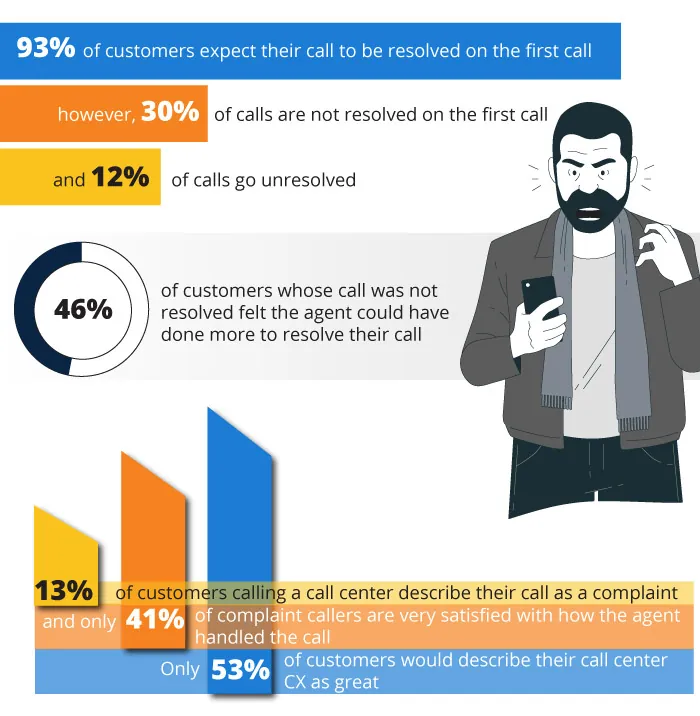
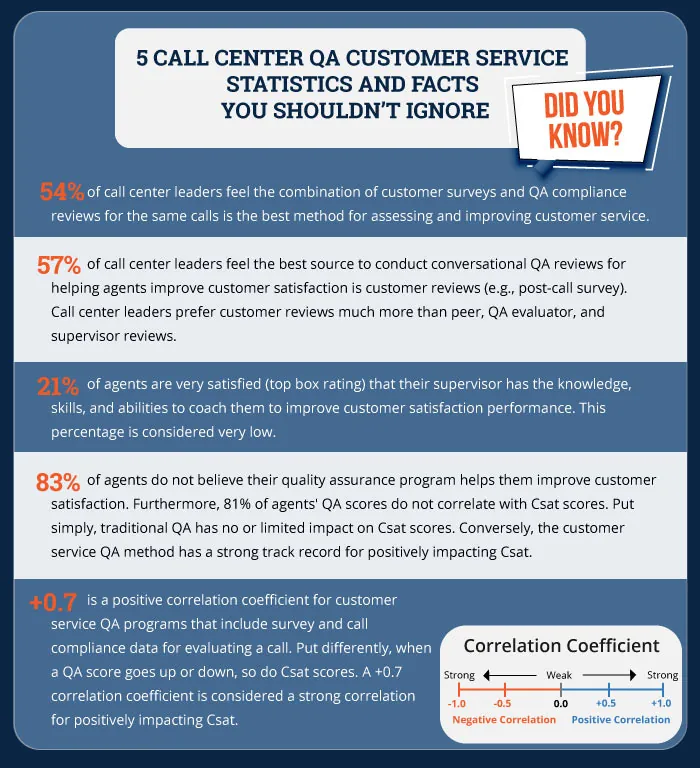
A holistic (e.g., 360-Degree Feedback) QA process helps you:
- Create a holistic view of QA by combining customer surveys and call handling compliance metrics to determine the QA score
- Measure, benchmark, and track your call center and agent QA performance
- Determine if your call center has a positive impact on helping achieve company goals
- Create agent and supervisor accountability for achieving call center customer service and costs goals
- Provide QA feedback and coaching opportunities on agent behavior
- Adhere to government laws and company security compliance
- Improve agent and supervisor job satisfaction and engagement
The QA scorecard is important because the agents know what KPIs and metrics they are being measured on, the weighting, the score for their delivery of each metric, and a total Customer Service QA score. A Customer Service QA scorecard uses data evaluation post-call survey, artificial intelligence, and QA evaluator methods to measure the quality of service your call center agent delivered to your customers.
Typically, the QA scorecard uses 15 to 25 metrics (e.g., Csat, call resolution, script adherence, and accuracy of information) that are weighted in terms of importance to the company's needs and strategy. The QA scorecard KPIs and metrics will define what a great customer experience looks like and provide insights for an agent on how well they performed.
For example, from a customer expectation perspective and using a post-call survey method, the QA scorecard will provide insights for:
- How satisfied was the customer with their overall call center experience?
- Was the customer's call resolved?
- Did the customer have a positive experience?
From a call center expectation perspective and using a QA evaluator method, the QA scorecard will provide insights for:
- Did the agent ask pertinent questions to understand the customer's issue?
- Did the agent provide accurate information?
- Was the agent efficient in handling the customer's call reason?
- Did the agent take ownership for resolving the customer's call reason?
- Did the agent adhere to government laws or company policies?
3. The Right KPIs and Metrics to Use to Improve the Impact QA Has on Customer Service
There is no shortage of KPIs and metrics that can be used to measure, and benchmark to improve your quality of customer service. However, to get the most out of your QA program, it must be aligned with the company's goals and have a well-defined purpose and definition of quality of service.
In many cases, the QA purpose will be tied to the company's mission purpose. For example, "Our QA program purpose is to provide great customer service on every call and ensure that we maximize agent performance."
After creating a well-defined QA purpose and the definition of quality of service, you are ready to determine the right KPIs and metrics to measure and improve Customer Service QA. Again, it is common for QA scorecards to use 15 to 25 metrics to evaluate agent performance. However, an effective Customer Service QA program should include the following metrics:
- Customer Satisfaction
- Call Resolution
- Call Handling Efficiency/AHT
- Taking Ownership
Customer Satisfaction
Customer Satisfaction (Csat) with the level of service an agent delivers handling a call, determined by a post-call survey. In most cases, either a four or five-point satisfaction scale is used, with the top box response being used to determine the agent or call center Csat score.
When you ask call center leaders and agents what is the most important KPI or metric for measuring and improving service quality, most will say it is the customer satisfaction metric. All QA scorecards should include the Csat metric and have it weighted highly (e.g., the highest or second highest weighting).
In fact, if you are serious about improving your call center's QA impact on the quality of service, including the customer satisfaction metric on the QA scorecard is a must. The Csat metric should be tracked, benchmarked at the agent level, and used for coaching and improving Customer Service QA.
So many QA programs have little or no impact on improving call center Csat delivery because the QA evaluator determines if the customer is satisfied. The best practice is to let the customer decide whether they are satisfied and include their rating on the QA form.
Most agents value being rated for Csat based on a post-call survey method. Agents want the customer satisfaction post-call survey questions to be about them. In addition, an agent will feel more comfortable being held accountable for the Csat metric if the survey questions focus on their service delivery.
Call Resolution
Call Resolution is based on a customer's inquiry or problem being resolved, determined by a post-call survey. It might take two or more calls to be resolved, but it was resolved. The majority of call centers do not know whether or not they resolved the customer's inquiry or problem. In most cases, it is assumed that if the customer does not call back, their inquiry or problem is resolved.
However, for unresolved calls in the best-case scenario, it might be that the customer chooses to use a different touchpoint (e.g., chat, email, website) to resolve their inquiry or problem. In the worst-case scenario, the customer may have gone to another organization. Therefore, it is essential to measure call resolution from a customer's perspective (e.g., post-call survey).
SQM believes that agent Csat and Call Resolution are the most important metrics to hold agents accountable for their performance. However, we place a higher emphasis on Call Resolution than the Csat metric because resolving a call reason is the most important moment of truth for a customer's call center experience. Call Resolution should be tracked, benchmarked, and included in the QA form at the agent level and used for coaching and improving Customer Service QA.
Similar to the Csat metric, most agents value the customers' determining if their call was resolved based on a post-call survey method. Agents want to be held accountable for Call Resolution versus First Call Resolution (FCR) because Call Resolution is a metric they feel they have control over, whereas FCR can be difficult to measure accurately at the agent level.
Call Handling Efficiency/AHT
The average handle time (AHT) metric measures the average time for an agent to resolve a customer issue or problem. AHT (i.e., agent talk time + hold time + after-call task time) starts when an agent answers the customer's call and ends after wrapping up the call.
The AHT metric should be tracked, benchmarked, and included in the QA form at the agent level and used for coaching and improving Customer Service QA. Moreover, AHT should also be tracked by call types, LoB, teams, and call centers to determine performance and identify opportunities for improvement.
It's also essential to consider that AHT should not be prioritized at the expense of quality customer service. While efficiency is essential, providing excellent support and resolving customer issues should remain the primary goal, even if it means longer AHT.
However, SQM's experience shows that AHT is important for managing call-handling efficiency at the agent level. Moreover, our data shows that agents with the highest Call Resolution performance have the lowest AHT among their peers in many cases.
SQM Group's research shows that the number one thing customers want from call centers is fast resolution for resolving their inquiries or problems. Furthermore, that is why First Call Resolution, AHT, hold and call transfer rates are essential metrics for monitoring and managing Call Handling Efficiency.
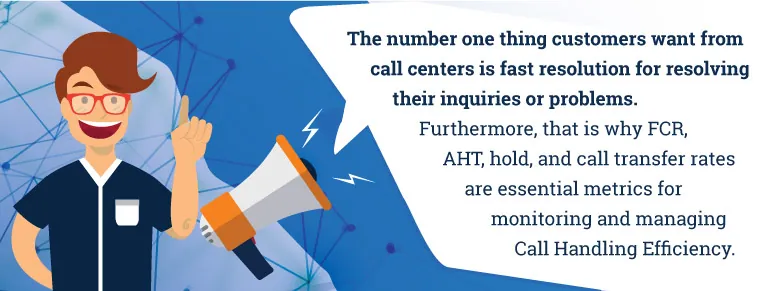
Taking Ownership
From a customer's perspective, they prefer to only talk to one agent, and the agent takes ownership of resolving their inquiry or problem. Therefore, the agent who first hears the call owns the call. Designing CX is guided by operating principles such as reducing customer effort, taking ownership of resolving an inquiry or problem, making it a positive CX, and being a customer advocate helping them resolve difficult issues.
In addition, supervisors should be able to identify whether or not low-performing Csat agents have a skill or a will issue and what type of action needs to be taken with the low-performing Csat agents.
Low Csat performing agents have will and skill issues. However, when a customer is dissatisfied with an agent, 62% of the time, it is due to a will issue, and 38% of the time is due to a skill issue. The agent taking ownership is essential for resolving calls and improving Csat, and those agents that take ownership tend to have a high will (e.g., take ownership) drive.
An agent resolves a customer's inquiry or problem by answering questions, solving problems, using authority and taking ownership, providing fair treatment, summarizing the call, communicating the next steps, and confirming that the call is resolved.
4. Provide Your Agents with the Right Customer Service QA Software
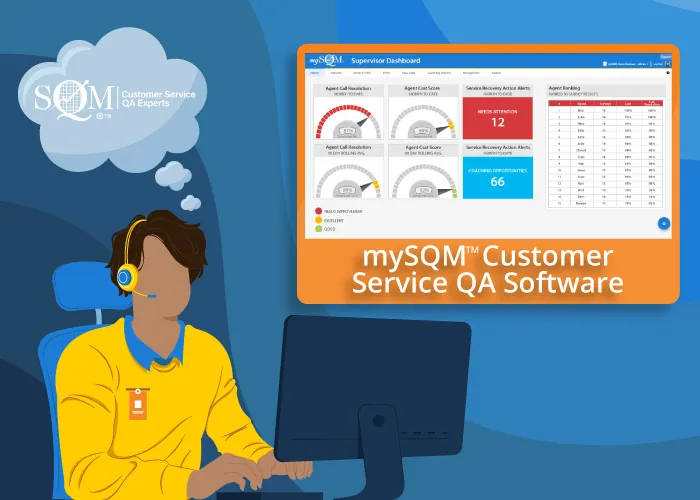
Your agents need the right QA software to improve customer service and lower costs. mySQM™ Customer Service QA Software is a single platform for call centers to deliver great CX and lower costs. mySQM™ Customer Service QA system empowers and engages agents with real-time CX feedback and provides agent self-coaching and recognition to deliver great CX.
mySQM™ QA software brings telephony calls, quality assurance, and post-call survey data into one fully integrated software for managing customer service data. mySQM™ QA software assists call center agents and managers in tracking, benchmarking, and improving Csat, call resolution, AHT, call handling, costs, customer service, compliance, and many more QA metrics.
mySQM™ QA software captures and reports internal data (e.g., ACD, QA) and external data (e.g., web, email, and phone surveys) for agent accountability, coaching, and recognition. Actionable reports are pushed out to agents and managers in real-time to improve customer service continually.
mySQM™ Customer Service QA Software provides a customizable agent dashboard, predetermined CX reports, real-time CX notifications, and the right KPIs and metrics. Providing agents with a QA dashboard and scorecard that shows their own data will make them more accountable and improve their performance.
When agents use a dashboard, it gives them valuable insights into the CX and will provide them with the big picture for how they are performing for KPIs and metrics such as Csat, call resolution, AHT, and taking ownership. An effective dashboard should not only provide insights into an agent's QA performance but also should provide actionable insights into coaching improving insights.
Request a mySQM™ Customer Service QA Demo Video
Learn about SQM's agent… CSAT prediction model, which is based on standardized metrics, AI, and regression analysis to predict customer satisfaction derived from a QA evaluation. Our CSAT prediction model provides a high statistical correlation, translating to a 95% success rate in predicting agent CSAT in most cases.
4.6




 Stars on G2 for mySQM™ Auto QA Tool Reviews
Stars on G2 for mySQM™ Auto QA Tool Reviews












What Differentiates SQM from its Competitors is our...
mySQM™ Automated QA/CX Analytics Solution that uses proprietary AI technology and intellectual property to determine QA scores and predict customer satisfaction with up to 95% accuracy for every call. SQM's Post-Call Customer Satisfaction Prediction QA Model - Is a Game-Changer!
SQM's QA and CSAT scores can be used to benchmark against 500 enterprise level call centers. Analyze 100% of customer calls with our auto QA/CX solution.
Furthermore, mySQM™ QA/CX provides agents with self-coaching, self-training, and real-time financial recognition features for calls evaluated to help monitor, motivate, and manage agents to deliver great customer satisfaction.
"Resolutionary!"
"User-friendly interface, strong service team!"
I've worked with several CX research supplies and would say that the mySQM tool is the best I've worked with so far. Dashboards are easy to setup and customize and it is also quite easy to setup data exports. The team at SQM has been flexible and great to work with.
"Valuable information everyday!"
The widgets are great for quick results and knowing how to start your day with your team. We can see the feedback and hear the input of our customers. The reporting can break down by different levels and metrics. Great way to benchmark your performance and see trends and opportunities.

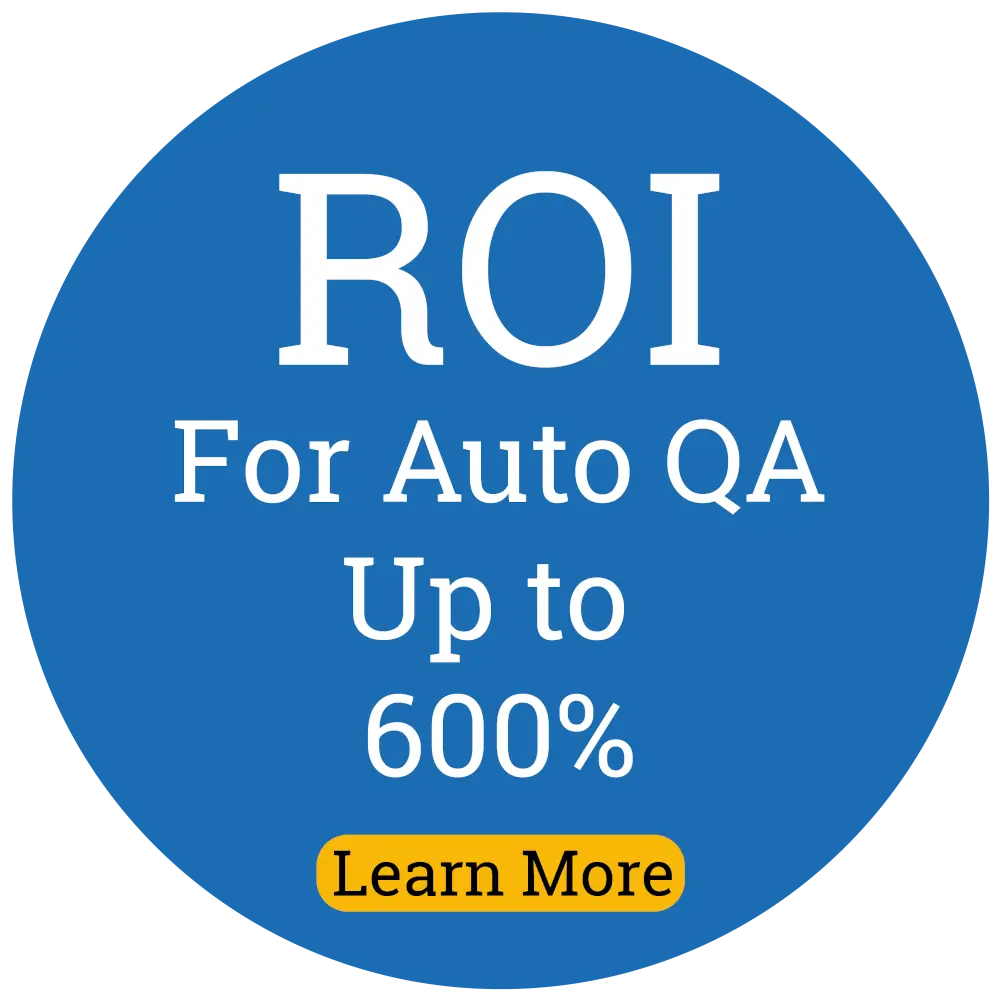
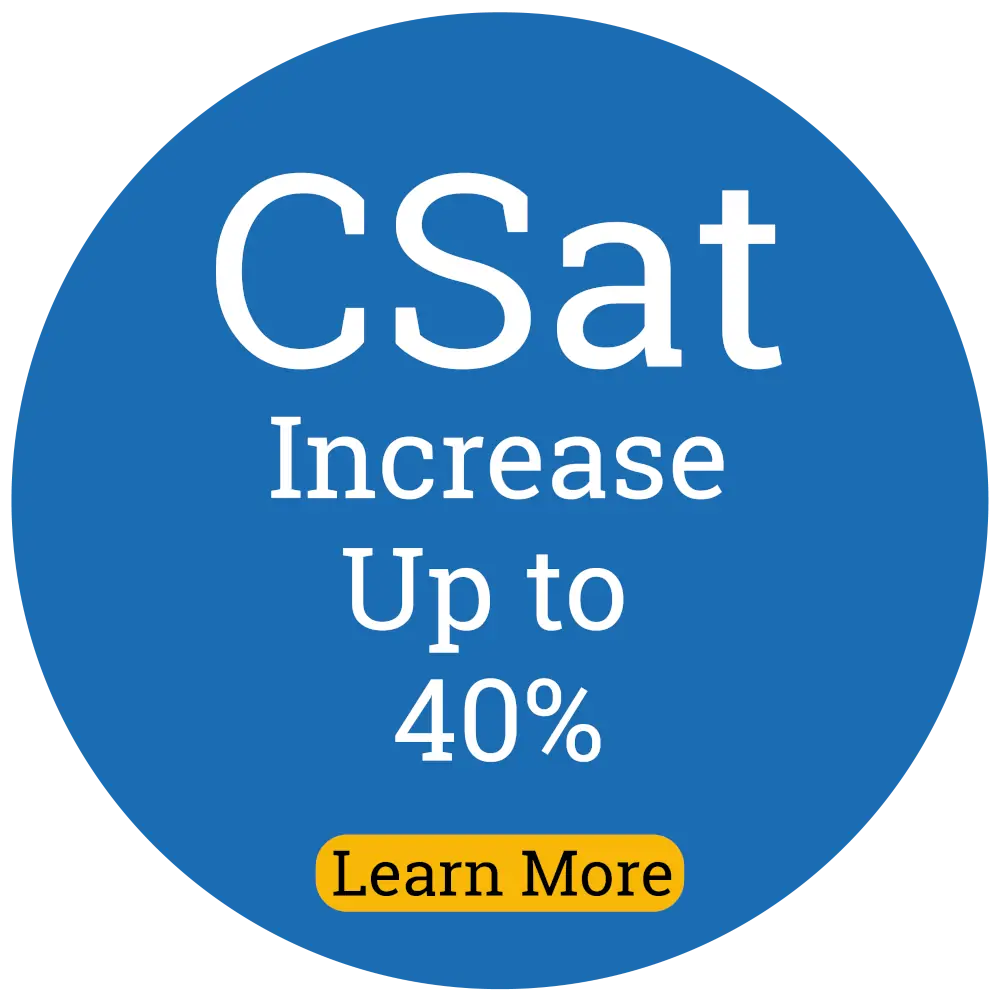




This will give advocates the opportunity to self-coach and learn better ways to improve before their coach or supervisor gets to them.